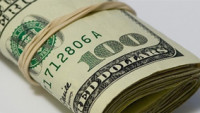GBP
Yesterday the Monetary Policy Committee (MPC) voted 8-1 to maintain Bank Rate at 5% in their latest policy decision, matching our own call and market expectations. That said, of the 58 economists surveyed by Bloomberg, only one expected the Bank of England to cut rates – meaning that yesterday’s decision was hardly a shock to traders. Where there were hints regarding the future path for rates, these skewed hawkish relative to market expectations. This saw sterling bounce post-release, with the pound hitting year-to-date highs versus the dollar and the euro.
The MPC made minimal changes to its guidance paragraph, though the MPC did add that “In the absence of material developments, a gradual approach to removing policy restraint remains appropriate”. At first glance this would appear to hint towards a quarterly pace of easing moving forward, offering a further hawkish signal to markets. However, taken in the broader context of the statement and the minutes, we think this is more likely to be pushback against the idea of easing in 50bp increments. Specifically, the minutes state that Bank Rate is likely to decline at a “more gradual” pace than in the US – notable given the Fed’s decision to cut by 50bps on Wednesday evening.
UK retail sales came in stronger than expected at 7am today, which provided good reason for the BoE to keep rates on hold.
USD
The S&P 500 closed at a record high yesterday as investors bet that the Federal Reserve’s large 50 basis point interest rate cut would help deliver a soft landing for the US economy. The Fed Funds range now stands at 4.75-5%. Markets had been evenly split ahead of the announcement between expecting 25 or 50 bps of easing. The quarter-point difference to a single short-term interest rate is, in isolation, of little significance to the wider economy. What matters about the size of a particular cut is what it signals about the central bank’s extended journey: what the so-called neutral rate is and when will it get there. The Fed’s current estimate for the neutral rate is 2.9%.
EUR
The euro strengthened mildly overnight against the USD. French PM Michel Barnier pitched a new government to Emmanuel Macron after two weeks of tense consultations with rival political groups. The final makeup of the cabinet will be announced by Sunday. Germany’s economy will only resume growth toward year-end, while narrowly dodging a recession before that, a Bloomberg survey showed. Much of the recovery which is expected to be sustained into 2025 will be cyclical, with downside risks remaining acute.
CAD
USDCAD was fairly flat during yesterday’s trading session as the markets digested the Fed’s rate cut on Wednesday evening. Although USD remains under some selling pressure for the second straight day and languishes near its lowest level since July 2023. Fed members projected another 50 basis points fall in borrowing costs by the end of this year, which, along with the prevalent risk-on mood, weighs on the safe-haven USD and acts as a headwind for the USDCAD pair. The markets started pricing in the possibility of a larger, 50 basis points Bank of Canada rate cut move next month after data published this week showed that Canada’s CPI posted its smallest increase since February 2021 and the core measures fell to the lowest level in 40 months. This, in turn, is holding back bulls from placing aggressive bets around CAD and lending some support to the USDCAD pair ahead of Friday’s release of Retail Sales data from Canada.












